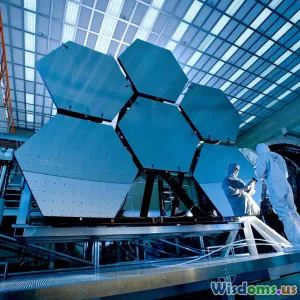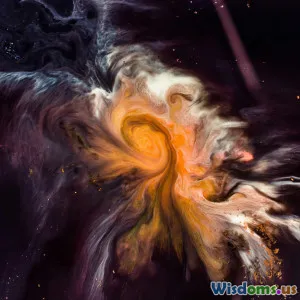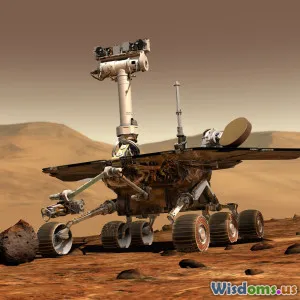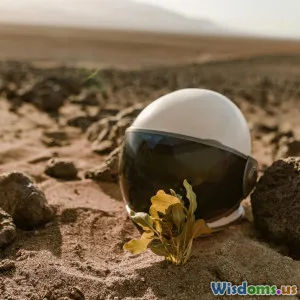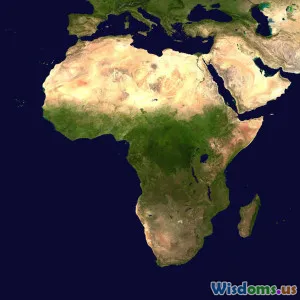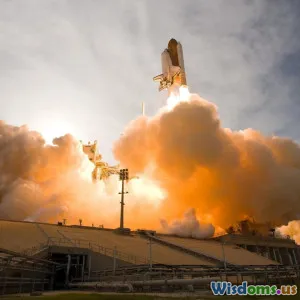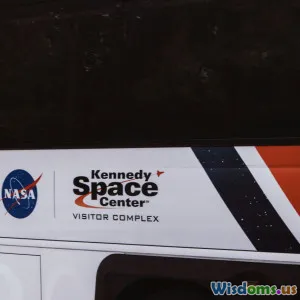
Five ISS Experiments That Changed Our Understanding of Aging
9 min read Explore five revolutionary ISS experiments that have transformed how we understand aging and its biological intricacies beyond Earth. (0 Reviews)
Five ISS Experiments That Changed Our Understanding of Aging
Aging is a complex biological process that intrigues scientists across disciplines. While Earth-based studies have long illuminated factors influencing how we age, experiments conducted aboard the International Space Station (ISS) have provided revolutionary insights. The unique microgravity environment of space accelerates certain aging processes while also unveiling novel biological behaviors invisible under Earth’s gravity. This article explores five groundbreaking ISS experiments that have reshaped scientific understanding of aging at cellular and systemic levels—insights with profound implications for medicine, space travel, and longevity.
Introduction: Why Study Aging on the ISS?
The ISS orbits approximately 408 kilometers above Earth, offering scientists an unparalleled laboratory to test hypotheses impossible in terrestrial settings. Microgravity disrupts physiological processes—muscle atrophy, bone density loss, immune changes—that parallel natural aging but within weeks instead of decades. These changes mimic aging but under controlled, observable timelines, thereby accelerating discovery.
Additionally, the ISS allows examination of molecular and cellular mechanisms without Earth’s gravitational interference, shedding light on fundamental aging biology and potential interventions.
1. Microgravity’s Impact on Muscle Atrophy: The Rodent Research-1 Experiment
One of the most visible symptoms of aging is muscle wasting, known as sarcopenia. The ISS’s Rodent Research-1 (RR-1) experiment investigated muscle degradation in mice subjected to spaceflight.
Details and Findings
RR-1, launched in 2014, sent mice on a 37-day mission. Researchers found that muscles experienced significant atrophy due to microgravity, leading to reduced muscle mass and strength. More importantly, molecular analysis uncovered decreased expression of proteins vital for muscle repair and growth, like IGF-1 (Insulin-like Growth Factor 1).
Implications
By observing the accelerated muscle loss in space, RR-1 helped researchers understand the signaling pathways deteriorating during sarcopenia. This knowledge empowers the design of targeted therapies on Earth, such as drugs or exercise regimens mimicking microgravity’s effects or counteracting them.
2. The Bioculture Systems Analysis: Aging’s Cellular Aging in Space
Understanding aging requires looking at cells themselves. The Bioculture System aboard the ISS has cultured human cells in space, observing their growth, division, and death.
Methodology
This experiment grew human muscle- and bone-related cells over several weeks in microgravity. The Bioculture System allowed for real-time monitoring and sampling for assays identifying gene expression changes.
Key Discoveries
Scientists found that spaceflight induced faster cellular senescence—a state where cells cease dividing and accumulate, contributing to tissue aging. Specifically, markers like p16INK4a rose significantly. Moreover, DNA repair mechanisms were hampered, increasing oxidative stress and damage within cells.
Real-World Impact
These findings highlight how space-stressed environments exacerbate cellular aging and identify biomarkers crucial for developing anti-aging interventions. Pharmaceutical research can now target these pathways to slow or reverse cellular senescence in aging populations.
3. The MULTIPLE Experimental Focus: Mitochondrial Dysfunction and Aging
Mitochondria, known as the cell’s powerhouses, deteriorate with age, contributing to energy loss and diseases like neurodegeneration.
ISS Insights
The MULTIPLE (Mitochondrial ULtrastructural and ultraconformational Proteomics under microgravity Environment) experiment examined mitochondrial structure and function in astronaut muscle biopsies before, during, and after flight.
Results
Findings showed significant mitochondrial remodeling and decreased efficiency during space travel. Importantly, astronauts’ mitochondria displayed increased reactive oxygen species (ROS) production, accelerating damage accumulation—one hallmark of aging.
Broader Significance
Recognizing mitochondrial vulnerability in microgravity helps redirect aging research to improve mitochondrial resilience, potentially preventing age-related disorders and improving quality of life in older adults.
4. Space-Immune Interactions: Unlocking the Aging Immune System (SLS-4 Mission)
The immune system weakens naturally with age, increasing infection and cancer risks. The SLS-4 experiment studied how spaceflight affects immune function in human lymphocytes.
Overview
This study exposed immune cells to microgravity and monitored key immune responses, including cytokine production and lymphocyte activation.
Major Takeaways
Researchers observed diminished immune signaling and increased inflammation markers, parallèle to immunosenescence seen in elderly individuals. Spaceflight also altered gene expression associated with immune surveillance.
Conclusion
The immune decline in space parallels accelerated aging, cementing the ISS as a model for immune aging studies. This knowledge is critical for designing vaccines, immune therapies, and health protocols for aging and immunocompromised populations.
5. Fluid Shifts and Brain Aging: The NASA Twins Study
Perhaps the most famous example touching aging insights, NASA’s Twins Study examined astronaut Scott Kelly, who spent nearly a year aboard the ISS, contrasted with his Earth-bound twin, Mark.
Experiment Scope
Researchers collected comprehensive data on cognitive performance, brain imaging, microbiome, and molecular markers over two years.
Findings Related to Aging
Prolonged exposure to microgravity caused fluid shifts toward the head, increasing intracranial pressure reminiscent of changes associated with neurodegeneration. Cognitive testing revealed both decline and recovery patterns.
Moreover, epigenetic modifications linked to aging processes were observed, with some changes reversing post-flight but others persisting longer than expected.
Implications for Aging Research
This study’s integrated approach highlights how brain aging can accelerate under specific stresses, such as fluid redistribution, oxidative damage, and inflammation. Understanding reversibility offers hope for mitigating brain aging diseases like Alzheimer’s.
Conclusion: A New Frontier in Aging Research
The ISS has proven indispensable in pushing the boundaries of aging research. By leveraging the distinct challenges of microgravity, radiation exposure, and confined environments, these five experiments not only elucidate how aging manifests differently beyond Earth but also provide a mirror reflecting fundamental biological truths.
Understanding accelerated muscle loss, cellular senescence, mitochondrial dysfunction, immune aging, and brain fluid dynamics through the lens of space biology enriches terrestrial biogerontology. The translational potential is immense—informing preventative medicine, novel therapeutics, and enhancing quality of life across populations.
As humanity prepares for longer space missions, this intersection of space science and aging biology will prove vital, shaping how we maintain health in space and improve aging outcomes on Earth. The voyage to decoding aging’s mysteries is truly lifted above the clouds.
References
- NASA Rodent Research-1 results, 2014
- Bioculture systems and cellular senescence studies, NASA GeneLab database
- MULTIPLE experiment summary, NASA space life sciences archive
- SLS-4 immune function investigations, Journal of Leukocyte Biology, 2018
- NASA Twins Study, Science, 2019
Author’s note: This article synthesizes complex science into accessible insights to inspire curiosity and foster appreciation of how space research advances global health knowledge.
Rate the Post
User Reviews
Popular Posts










